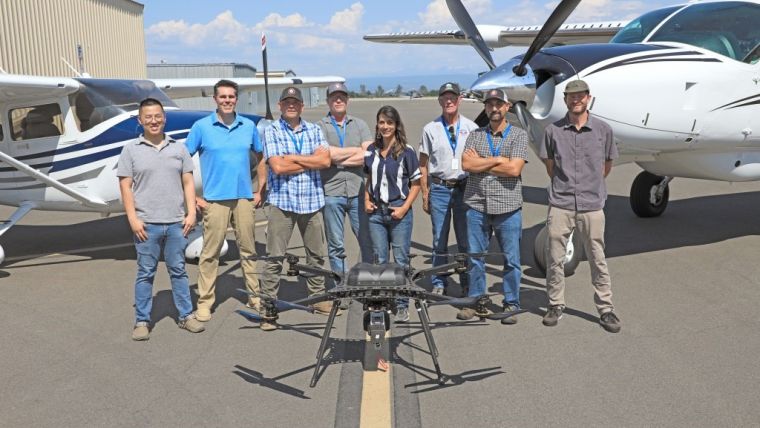Introduction
In the rapidly evolving landscape of modern agriculture, technology plays a pivotal role in increasing efficiency, reducing resource use, and optimizing crop yields. Drones and Unmanned Aerial Vehicles (UAVs) have emerged as game-changers in the realm of precision agriculture. These aerial devices offer a bird’s-eye view of fields, providing farmers with invaluable data and insights for more effective crop management. In this article, we will explore the diverse applications of drones and UAVs in agriculture, highlighting their benefits and the transformative impact they have on farming practices.
In the dynamic and ever-changing realm of modern agriculture, technology stands as a driving force propelling us toward more sustainable, efficient, and productive farming practices. Amid this technological revolution, one innovation has truly taken flight – Drones and Unmanned Aerial Vehicles (UAVs), which are revolutionizing agriculture through precision and data-driven decision-making.
These flying marvels have not only captured the imagination of farmers but have also become indispensable tools in their agricultural toolkit. Here’s an exploration of the multifaceted applications of drones and UAVs in agriculture and the remarkable benefits they bring to the field:
Crop Monitoring and Health Assessment: Drones equipped with specialized sensors and cameras soar over fields, capturing high-resolution images and data that reveal the health and vigor of crops. This aerial perspective allows farmers to detect signs of stress, disease, or nutrient deficiencies much earlier than traditional scouting methods. Consequently, timely interventions can be implemented, reducing crop losses and minimizing the need for excessive pesticide use.
Precision Crop Management: With the data collected by drones, farmers can precisely target their interventions. This includes the precise application of fertilizers, herbicides, and pesticides. By optimizing resource allocation, drones contribute to more sustainable farming practices, minimizing environmental impact and reducing operational costs.
Yield Prediction and Crop Modeling: Drones are instrumental in yield prediction and crop modeling. They collect data on plant height, canopy cover, and flowering patterns, which can be analyzed to estimate crop yields accurately. This valuable information helps farmers make informed decisions about harvest timing and marketing strategies.
Irrigation Management: Drones assist in assessing soil moisture levels across fields, helping farmers make data-driven decisions regarding irrigation. By avoiding under- or over-irrigation, farmers conserve water resources and enhance crop health and yield potential.
Land and Soil Analysis: Beyond monitoring crops, drones can be equipped with soil sensors to assess soil health, composition, and moisture content. This information guides decisions about soil preparation and nutrient management, ensuring optimal growing conditions.
Pest and Disease Control: Drones equipped with infrared cameras can identify temperature variations on plant surfaces caused by pest infestations or diseases. Early detection enables targeted treatment, reducing the need for broad-spectrum pesticides and minimizing environmental impact.
Environmental Stewardship: By optimizing agricultural practices and reducing resource inputs, drones contribute to more sustainable and environmentally friendly farming. This aligns with the broader goal of protecting ecosystems, conserving biodiversity, and mitigating the impacts of agriculture on the environment.
In conclusion, drones and UAVs have undoubtedly emerged as transformative tools in modern agriculture. Their ability to provide real-time, high-resolution data has revolutionized crop management, increased productivity, and reduced the environmental footprint of farming operations. As these technologies continue to evolve, their role in shaping the future of agriculture cannot be overstated, offering a bright and sustainable path forward for the global food system.
Explore this link for a more extensive examination of the topic: Implementation of artificial intelligence in agriculture for optimisation …
Precision agriculture, sometimes referred to as smart farming, focuses on optimizing every aspect of crop management to achieve the best possible outcomes. It relies on real-time data and technology-driven solutions to make informed decisions. Drones and UAVs have become indispensable tools in this approach, providing farmers with an aerial perspective that was previously inaccessible.
Precision agriculture, often synonymous with smart farming, represents a significant shift from traditional farming practices. It’s akin to providing farmers with a pair of high-tech glasses that offer a detailed and real-time view of their fields and crops.
Data-Driven Decision-Making:
At the heart of precision agriculture lies data – abundant, timely, and actionable data. Drones and UAVs serve as the eyes and ears of this data-driven revolution. They collect a wealth of information that encompasses not only visible attributes of crops but also data that extends into the invisible realms of the electromagnetic spectrum, such as infrared and thermal imaging. This comprehensive data trove enables farmers to make highly informed decisions.
Fine-Tuning Resource Allocation:
Farmers can use data collected by drones to fine-tune the allocation of resources. For example, if the drone detects variations in soil moisture or nutrient levels, farmers can apply water or fertilizer precisely where and when it is needed. This reduces wastage, saves costs, and minimizes the environmental impact associated with excessive resource use.
Crop Health at a Glance:
Aerial imagery from drones provides an invaluable overview of crop health. The technology can detect early signs of stress, which may indicate diseases, nutrient deficiencies, or pest infestations. This early detection allows for targeted intervention, potentially saving entire crops from damage and ensuring healthier yields.
Monitoring Large Areas Quickly:
The speed and efficiency of drones are particularly beneficial for monitoring large agricultural landscapes. What might take a team of workers days to inspect on foot can be accomplished by a drone in a matter of hours. This rapid data collection is vital during critical growth stages and when responding to emerging issues like disease outbreaks or weather-related challenges.
Continuous Improvement:
One of the greatest strengths of precision agriculture is its adaptability and continuous improvement. Drones and UAVs are not static tools; they are part of a dynamic system that evolves with technology. As sensors become more advanced, data processing more efficient, and artificial intelligence more capable, the insights provided by drones will become even more sophisticated, enabling farmers to further optimize their operations and sustainability efforts.
In essence, precision agriculture empowered by drones and UAVs is a transformational shift in farming. It is a transition from the educated guesswork of the past to the data-driven, highly precise decision-making of the future. As these technologies continue to advance, the potential to feed a growing global population while minimizing environmental impact becomes increasingly achievable. Precision agriculture, guided by the watchful eye of drones, represents not only the future of farming but a path toward a more sustainable and productive agricultural sector.
Additionally, you can find further information on this topic by visiting this page: Applications of Remote Sensing in Precision Agriculture: A Review
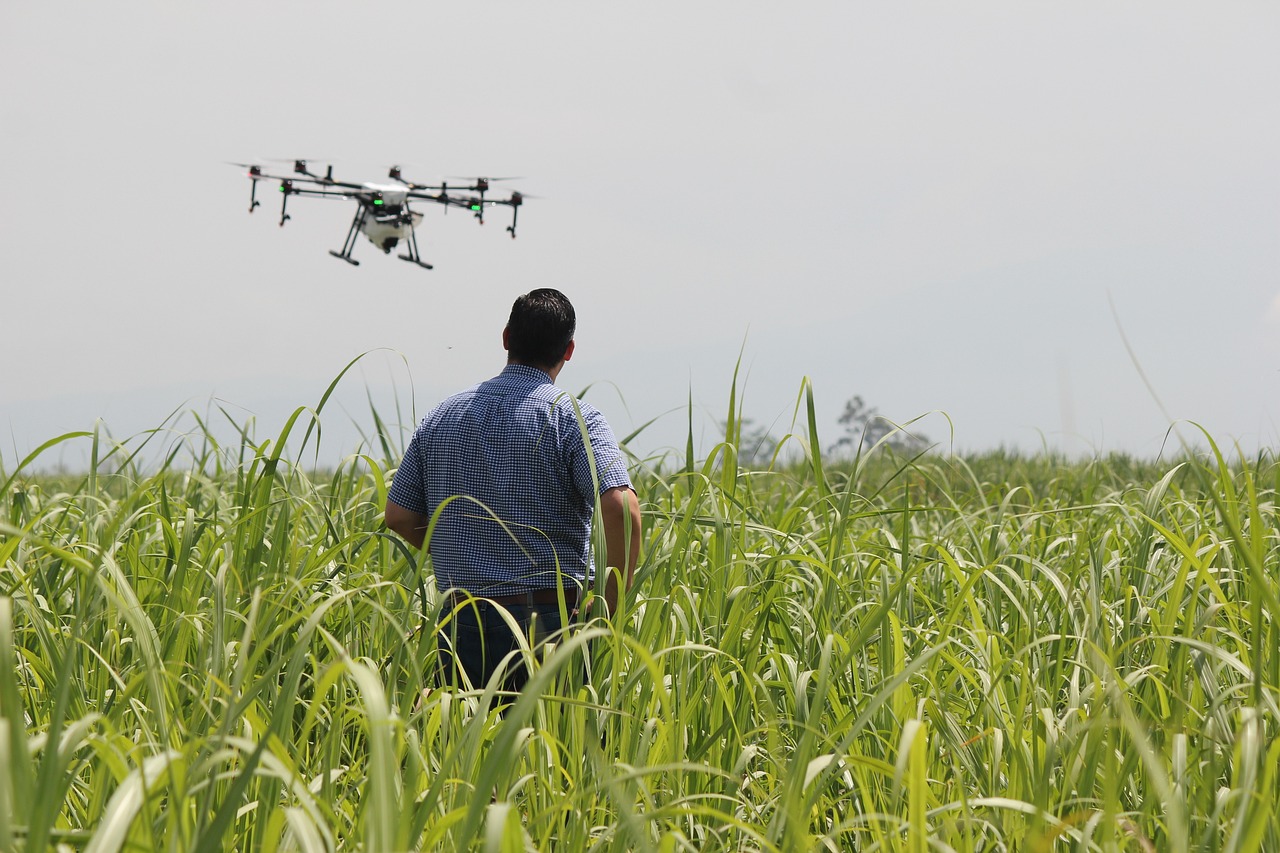
Drones equipped with specialized sensors can capture high-resolution images and multispectral data of crops. This data is then analyzed to assess crop health, detect stressors like pests and diseases, and identify nutrient deficiencies. Early detection allows for targeted interventions, reducing the need for broad-spectrum pesticides and optimizing resource use.
The integration of drones and advanced sensors into modern agriculture represents a remarkable leap in precision farming, offering a myriad of benefits that extend far beyond traditional methods. Here, we delve deeper into how this innovative approach is revolutionizing crop management and fostering more sustainable agricultural practices:
Precision Crop Monitoring: Drones equipped with specialized sensors provide farmers with unparalleled precision when it comes to crop monitoring. These flying platforms can capture high-resolution images and multispectral data, painting a detailed picture of the entire field. This level of granularity enables farmers to identify subtle variations in crop health, even in large and expansive agricultural landscapes.
Early Detection and Diagnosis: One of the most significant advantages of drone-based crop monitoring is its ability to detect issues at their earliest stages. By analyzing the data collected by drones, farmers can spot signs of stressors such as pests, diseases, or nutrient deficiencies before they become widespread. This early detection is crucial because it allows for prompt and targeted interventions.
Reduced Chemical Usage: Early detection of crop stressors translates into more efficient pest and disease management. Instead of resorting to broad-spectrum pesticides that can harm beneficial insects and the environment, farmers can apply interventions precisely where needed. This targeted approach reduces chemical usage, minimizes the ecological impact, and preserves natural predators that help control pests.
Optimized Resource Allocation: Drones offer a significant advantage when it comes to resource allocation. By identifying specific areas of a field that require attention, farmers can optimize the use of resources such as water, fertilizers, and pesticides. This not only conserves valuable inputs but also reduces production costs and environmental impact.
Crop Yield Optimization: The ability to closely monitor and manage crops translates into improved crop yields. Farmers can take timely actions to address stressors and optimize crop health, ultimately leading to higher productivity. This is especially critical in a world where the demand for food is continuously increasing.
Data-Driven Decision-Making: The data collected by drones doesn’t merely serve as a record of crop health; it becomes a powerful tool for data-driven decision-making. Farmers can use this information to develop precise and adaptive strategies for their crops, adjusting practices based on real-time conditions and historical data.
Sustainable Agriculture: The integration of drones into agriculture aligns with the principles of sustainability. By reducing chemical usage, conserving resources, and minimizing the ecological footprint, this technology contributes to more sustainable and environmentally friendly farming practices.
Accessibility and Scalability: As drone technology becomes more accessible and affordable, it can benefit farmers of all scales. From smallholders to large agricultural enterprises, the benefits of drone-based crop monitoring can be harnessed across diverse farming contexts, improving agricultural sustainability on a global scale.
In conclusion, drones equipped with advanced sensors represent a game-changing innovation in agriculture. Their ability to capture precise data, enable early detection, and support targeted interventions is revolutionizing crop management. This technology not only enhances crop yields and reduces production costs but also fosters sustainable farming practices that prioritize environmental stewardship. As it continues to evolve, drone-based crop monitoring is set to play a pivotal role in shaping the future of agriculture, making it more resilient, efficient, and environmentally friendly.
For additional details, consider exploring the related content available here 3D and Drone Mapping in Agriculture
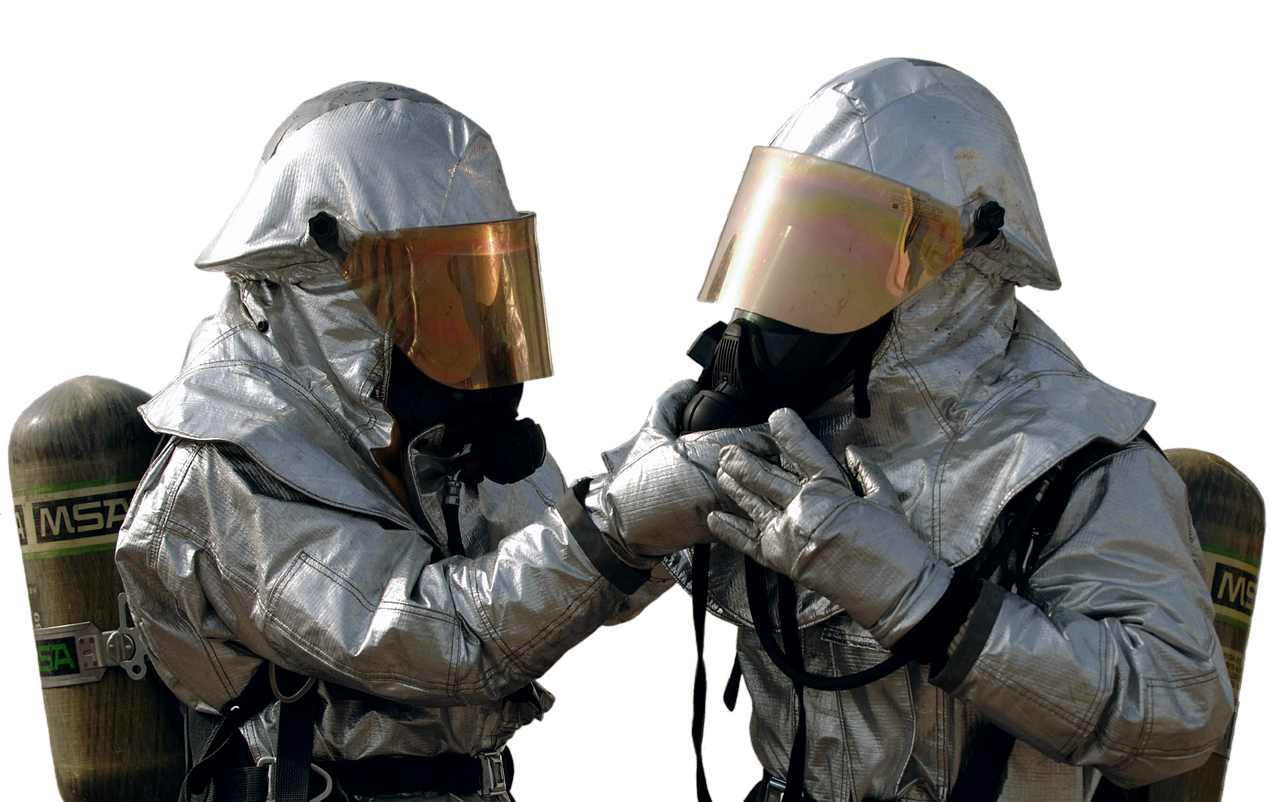
UAVs can assess soil moisture levels and plant water stress, helping farmers optimize irrigation schedules. This leads to significant water savings and prevents over-irrigation, which can leach nutrients and harm the environment.
Unmanned Aerial Vehicles (UAVs), also known as drones, have emerged as invaluable tools in modern agriculture, offering farmers a level of precision and efficiency that was once unimaginable. Their ability to assess critical factors such as soil moisture levels and plant water stress has revolutionized irrigation practices, leading to both environmental benefits and improved agricultural outcomes.
In the realm of soil moisture management, UAVs equipped with advanced sensors can provide farmers with real-time data on soil conditions across their fields. This granular information allows for a fine-tuned approach to irrigation, enabling farmers to optimize their watering schedules with pinpoint accuracy. By avoiding the under-irrigation of crops, which can lead to stunted growth and reduced yields, and equally steering clear of over-irrigation, which can cause nutrient leaching and environmental harm, farmers can strike the perfect balance for crop health and productivity.
One of the most significant advantages of UAVs in irrigation management is the prevention of over-irrigation. Excessive watering not only wastes precious water resources but also leaches vital nutrients from the soil, which can contaminate groundwater and harm ecosystems. By precisely determining when and where irrigation is needed, drones mitigate the environmental impact associated with excessive water usage. This is especially critical in regions where water is a scarce resource, as it conserves this precious commodity while simultaneously protecting the environment.
Furthermore, UAVs equipped with thermal imaging cameras can detect variations in plant temperature and moisture stress levels. This technology enables farmers to identify areas of their fields that may require extra attention, allowing for targeted irrigation rather than uniformly watering an entire field. This approach reduces water wastage and minimizes the risk of promoting fungal diseases in crops, which can thrive in excessively wet conditions.
In the broader context of sustainable agriculture, the integration of UAVs into irrigation practices represents a significant step toward responsible resource management. It not only conserves water but also minimizes the need for chemical fertilizers, as nutrient leaching is reduced. As a result, farmers can enhance both their economic viability and their environmental stewardship, aligning their agricultural practices with the growing demands of a more sustainable and eco-conscious world.
To expand your knowledge on this subject, make sure to read on at this location: A Review on UAV-Based Applications for Precision Agriculture
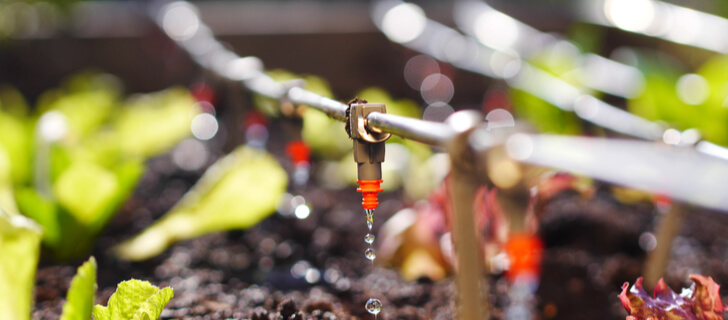
Drones create detailed 3D maps of fields, enabling accurate land surveys and soil analysis. This information assists in soil preparation, drainage planning, and determining planting patterns.
“Drones revolutionize modern agriculture by harnessing cutting-edge technology to create highly detailed 3D maps of fields. These digital representations of farmland provide a wealth of invaluable data that significantly enhances farming practices and crop management.
The intricate 3D maps generated by drones serve as the foundation for a multitude of applications in agriculture. One of the foremost benefits is the precision they offer in land surveys and soil analysis. Traditional methods of land surveying and soil testing can be time-consuming and expensive, often providing only limited insights. Drones, on the other hand, soar above the fields, capturing vast amounts of data in a fraction of the time and at a fraction of the cost. This data includes topographical information, soil composition, and moisture levels, all of which are crucial for making informed decisions about crop cultivation.
In the realm of soil preparation, these 3D maps are indispensable. Armed with detailed knowledge about the topography and soil quality of a given area, farmers can optimize their land preparation processes. For instance, they can precisely plan the grading of the land to ensure proper water drainage, mitigating the risk of waterlogging and erosion. This not only conserves water resources but also contributes to the sustainable use of land.
Moreover, the 3D maps assist in determining planting patterns with unmatched accuracy. Farmers can identify areas within their fields that are better suited for specific crops based on factors such as soil composition, elevation, and sunlight exposure. This level of precision leads to higher crop yields and resource efficiency. It enables farmers to adopt precision agriculture techniques, such as variable rate seeding and fertilization, which further enhance productivity while minimizing inputs.
Additionally, drones can continuously monitor the condition of crops throughout the growing season, overlaying real-time data onto the existing 3D maps. This allows farmers to detect issues like pest infestations, nutrient deficiencies, or disease outbreaks early on, enabling targeted interventions and reducing crop losses.
In a world where sustainable and efficient agriculture is of paramount importance, drones and their 3D mapping capabilities have emerged as a game-changer. They empower farmers with the knowledge needed to make data-driven decisions, optimize resource utilization, and ultimately contribute to a more resilient and productive agricultural sector.”
For additional details, consider exploring the related content available here PIX4Dfields: Drone software for agriculture mapping | Pix4D
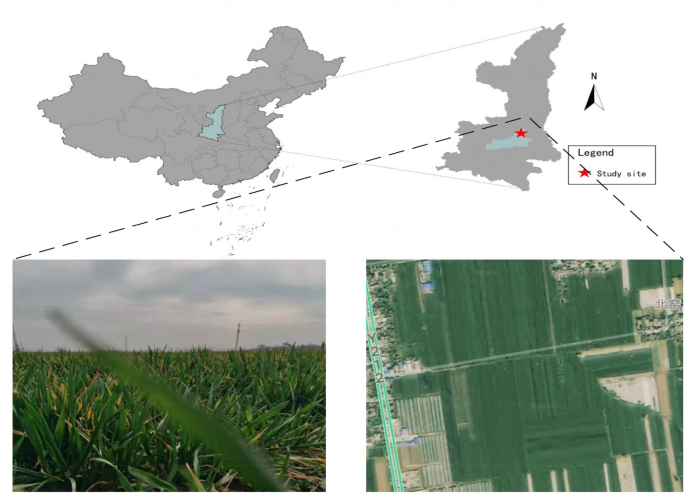
Drones equipped with cameras and machine learning algorithms can identify and target weeds within fields. This precise weed control reduces the reliance on herbicides and minimizes damage to desirable crops.
The integration of drones and cutting-edge technology in agriculture is ushering in a new era of precision farming, particularly in the realm of weed control. Drones equipped with high-resolution cameras and sophisticated machine learning algorithms are not merely high-tech gadgets; they are powerful allies in the ongoing quest for more sustainable and efficient agriculture.
Imagine a drone soaring gracefully above a vast field of crops, its camera capturing detailed images of the terrain below. These images are then processed by machine learning algorithms capable of distinguishing between crops and weeds with incredible accuracy. This level of precision is a game-changer in the battle against unwanted vegetation.
One of the standout benefits of drone-assisted weed control is the significant reduction in herbicide use. Traditional, blanket herbicide application can be detrimental to both the environment and crop health. It not only contributes to the development of herbicide-resistant weeds but also poses risks to non-target species and nearby water bodies. Drones, armed with the ability to pinpoint individual weeds, apply herbicides sparingly and exclusively to the areas where they are needed. This targeted approach minimizes the environmental impact while maximizing cost-efficiency.
Furthermore, drone-assisted weed control promotes healthier and more robust crops. By selectively targeting weeds and minimizing herbicide exposure to desirable plants, farmers can ensure that their crops receive the necessary nutrients, sunlight, and space to thrive. This not only results in higher yields but also enhances the overall quality of the harvest.
Another advantage of this technology is its speed and scalability. Drones can cover large areas quickly, allowing for timely weed management, which is crucial to prevent weed competition with crops. Moreover, the scalability of drone-based systems means that they can be adapted to suit farms of varying sizes, from small family farms to extensive commercial operations.
As we navigate the challenges of sustainable agriculture and seek to reduce the environmental impact of conventional farming practices, the synergy between drones and machine learning is a beacon of hope. It exemplifies how technology can empower farmers to make more informed decisions, reduce chemical inputs, and cultivate crops more efficiently. In essence, it’s a testament to the transformative potential of innovation in the field of agriculture.
Don’t stop here; you can continue your exploration by following this link for more details: Drones in agriculture: A review and bibliometric analysis …
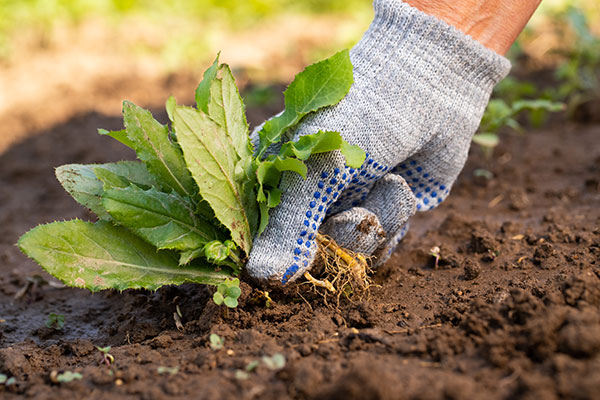
Drones equipped with thermal cameras can detect temperature variations that may indicate pest infestations. Farmers can then focus pest control efforts on specific areas, reducing chemical use and costs.
The integration of thermal-equipped drones into agriculture signifies a cutting-edge approach to pest management that not only optimizes resource use but also contributes to more sustainable farming practices. Let’s delve deeper into the manifold advantages and implications of this technological innovation.
Early Pest Detection: Thermal cameras on drones have the capability to identify temperature anomalies, which can be indicative of pest infestations even before visible symptoms manifest. This early detection empowers farmers to intervene swiftly, preventing pest populations from reaching damaging levels.
Targeted Pest Control: Armed with precise information about pest hotspots, farmers can target their pest control measures. This targeted approach significantly reduces the need for broad-spectrum pesticides, curbing the environmental impact and minimizing harm to non-target species.
Chemical Reduction: The reduction in chemical pesticide usage has far-reaching benefits, including lower production costs, reduced chemical runoff into waterways, and a diminished risk of pesticide resistance among pest populations.
Environmental Preservation: By minimizing the use of chemical pesticides, thermal-equipped drones contribute to the preservation of ecosystems, safeguarding pollinators and beneficial insects critical for crop health and biodiversity.
Health and Safety: Fewer chemical applications translate to a safer and healthier environment for farmworkers, neighboring communities, and consumers, as residues on crops are minimized.
Data-Driven Decision-Making: Thermal-equipped drones generate valuable data that can be used for continuous monitoring and trend analysis. This data-driven approach enables farmers to make informed decisions about pest management strategies, optimizing long-term outcomes.
Resource Efficiency: Efficient use of resources, including pesticides and fuel for traditional ground-based scouting, enhances overall resource efficiency. This can lead to cost savings and improved farm profitability.
Scalability: The scalability of drone technology means that it can be employed on both small family farms and large-scale commercial operations, democratizing access to advanced pest management tools.
Resilience: The ability to swiftly identify and mitigate pest threats enhances the resilience of agricultural systems. This is particularly important in a world grappling with climate change-induced shifts in pest distribution and behavior.
Regulatory Compliance: The adoption of sustainable pest management practices, such as those facilitated by thermal-equipped drones, aligns with evolving regulations and consumer preferences for environmentally friendly and responsible farming.
In summary, the utilization of thermal-equipped drones for pest detection and management is a game-changer in modern agriculture. It not only empowers farmers with early, accurate insights into pest pressures but also advances sustainable farming practices. By reducing chemical pesticide use and promoting precision in pest control efforts, these drones represent a pivotal step towards a more environmentally conscious and economically viable future for agriculture.
You can also read more about this here: Drones in agriculture: A review and bibliometric analysis …
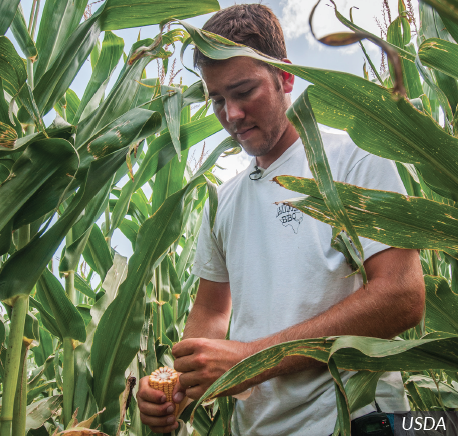
Drones cover large areas quickly and efficiently, saving time and labor costs. They provide real-time data, allowing for immediate decision-making and action.
Drones have emerged as indispensable tools in various fields, offering rapid and efficient coverage of large areas while delivering real-time data that revolutionizes decision-making and actions across industries.
Aerial Surveillance
Drones are particularly adept at aerial surveillance, offering a bird’s-eye view of vast expanses of land. In agriculture, for instance, they can monitor crop health, detect pests and diseases, and assess irrigation needs. This aerial perspective allows for the rapid identification of issues that might be difficult to spot from the ground, enabling timely responses and minimizing crop losses.
Time and Labor Savings
The speed and efficiency of drones are unparalleled when compared to traditional methods of data collection. For example, in the field of construction, drones can perform site surveys and inspections much faster than human labor. Similarly, in search and rescue operations, they can cover extensive areas in a fraction of the time it would take ground teams. This translates into substantial time and labor savings, reducing costs and expediting project timelines.
Real-Time Data Insights
One of the standout features of drones is their ability to provide real-time data. This feature has far-reaching implications across numerous sectors. In disaster response scenarios, drones can quickly assess damage, locate survivors, and relay critical information to first responders, facilitating timely and effective rescue efforts.
In agriculture, real-time data from drones can guide precision farming practices. Farmers can receive immediate insights into crop conditions, enabling them to make on-the-spot decisions about irrigation, fertilization, or pest control. This responsive approach optimizes resource use and enhances crop yields.
Environmental Monitoring
Drones are valuable tools for environmental monitoring and conservation efforts. They can be used to survey ecosystems, track wildlife populations, and monitor changes in vegetation cover. Real-time data from these missions contribute to our understanding of environmental dynamics, aiding in the protection and preservation of fragile ecosystems.
Infrastructure Inspection
The infrastructure sector also benefits significantly from drone technology. Drones can inspect bridges, power lines, pipelines, and other critical infrastructure quickly and with great precision. By identifying maintenance needs or potential hazards in real time, they help prevent accidents and costly repairs.
Innovative Mapping and Surveying
Drones equipped with advanced sensors can create highly accurate maps and 3D models of terrain, archaeological sites, or construction projects. These maps serve as essential tools for urban planning, land development, and archaeological research, guiding informed decision-making and facilitating efficient project management.
In conclusion, the multifaceted capabilities of drones are transforming industries and fields ranging from agriculture to disaster response, construction, environmental conservation, and infrastructure maintenance. Their ability to cover large areas rapidly, save time and labor costs, provide real-time data, and support innovative mapping and surveying makes them invaluable assets in an increasingly data-driven and efficiency-focused world. As technology continues to advance, the applications of drones are likely to expand further, shaping the way we approach various tasks and challenges across diverse domains.
You can also read more about this here: Drones | AgTech
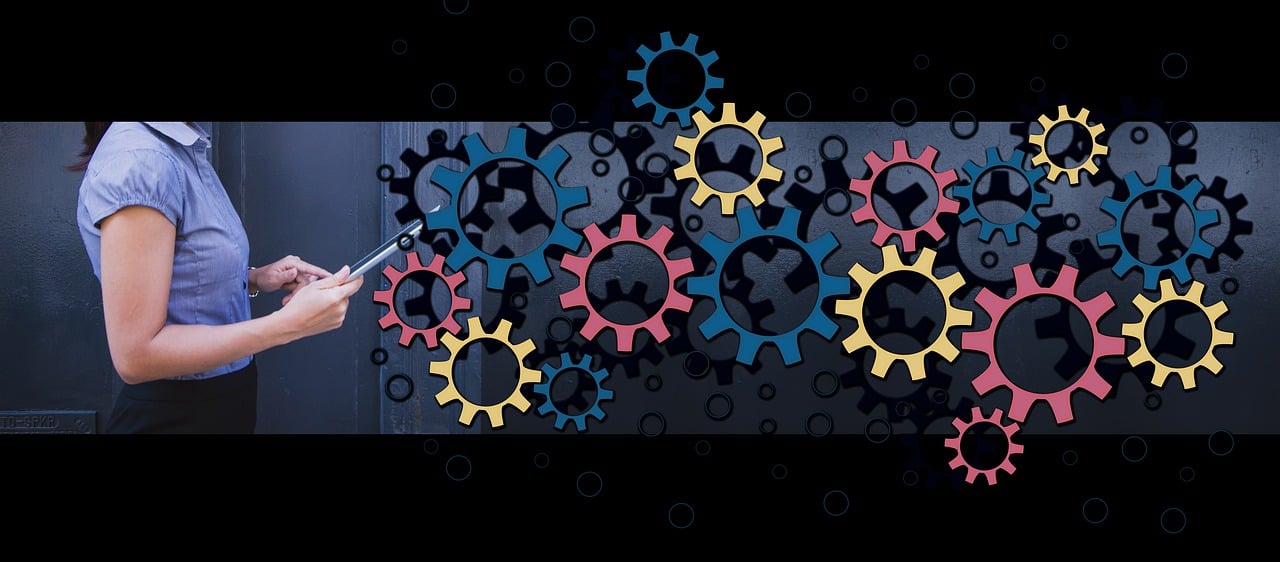
By pinpointing issues such as water stress, nutrient deficiencies, or pests, drones help farmers use resources like water, fertilizer, and pesticides more effectively, reducing waste and environmental impact.
The integration of drones in modern agriculture has ushered in a new era of precision farming, where technology takes center stage in optimizing resource management. This technology not only identifies and addresses agricultural challenges but also contributes to sustainable and eco-friendly practices. Here’s how drones are making a significant impact:
Resource Efficiency: Drones equipped with various sensors and cameras can capture detailed information about crop health, soil moisture levels, and pest infestations. This data allows farmers to apply resources like water, fertilizer, and pesticides precisely where they are needed, minimizing waste and reducing environmental impact.
Water Management: In regions prone to water scarcity, drone-based imagery helps farmers manage irrigation more effectively. By identifying areas with water stress and monitoring soil moisture levels, drones enable precise irrigation scheduling. This not only conserves water but also prevents over-irrigation, which can leach nutrients and chemicals into water bodies.
Nutrient Management: Drones contribute to precision nutrient management by assessing nutrient deficiencies in crops. By identifying specific areas in need of fertilization, farmers can tailor their fertilizer applications. This reduces excess nutrient runoff, which can pollute waterways and harm aquatic ecosystems.
Pest and Disease Monitoring: Drones equipped with thermal cameras and multispectral sensors can detect early signs of pest infestations and diseases. This early detection allows for targeted intervention, reducing the need for widespread pesticide application and minimizing chemical exposure.
Reduced Chemical Usage: Drones enable the application of pesticides with unprecedented precision. Instead of blanket spraying, farmers can use drones to target specific areas affected by pests. This reduces the overall use of chemicals and minimizes their impact on non-target organisms.
Timely Interventions: Drones provide real-time data and images, allowing farmers to respond promptly to emerging issues. Timely interventions can save crops from extensive damage and reduce the need for drastic measures.
Erosion Control: Drones can survey fields to identify areas prone to erosion. Farmers can then implement erosion control measures like planting cover crops or installing barriers to protect soil from runoff and degradation.
Biodiversity Conservation: Precision farming with drones promotes biodiversity by reducing the ecological footprint of agriculture. Targeted applications of resources minimize disruption to natural ecosystems and reduce the risk of habitat destruction.
Data-Driven Decision-Making: The data collected by drones can be analyzed to gain valuable insights into crop performance and environmental conditions. This data-driven approach supports more informed decision-making and long-term sustainability.
Reduced Greenhouse Gas Emissions: Precision farming practices, facilitated by drones, can help reduce greenhouse gas emissions associated with agriculture. By optimizing resource use, fewer emissions are generated during the production and application of inputs.
Economic Benefits: Drones not only benefit the environment but also offer economic advantages to farmers. Increased efficiency, reduced input costs, and improved crop yields contribute to the overall profitability of farming operations.
In conclusion, drones have emerged as powerful tools for sustainable agriculture, offering a win-win solution for both farmers and the environment. Their ability to pinpoint agricultural issues, facilitate resource-efficient practices, and reduce waste underscores their role in ushering in a more sustainable and eco-conscious era of farming. As this technology continues to evolve, it holds the promise of further revolutionizing agriculture while minimizing its ecological footprint.
To delve further into this matter, we encourage you to check out the additional resources provided here: Publication-Unmanned Aerial Vehicles: Checklist for Drones Flying …

With better-informed decisions and proactive pest and disease management, farmers can achieve higher crop yields and better crop quality.
Empowering farmers with knowledge and proactive pest and disease management strategies not only enhances their ability to achieve higher crop yields and better quality but also leads to a multitude of broader agricultural and economic benefits. Expanding on this idea:
Maximizing Productivity: Informed decisions allow farmers to optimize crop planting schedules, select suitable crop varieties, and implement appropriate pest and disease control measures. This precision in planning and management results in increased crop yields, ensuring a more abundant food supply for communities.
Enhancing Crop Quality: A proactive approach to pest and disease management involves early detection and intervention. By addressing issues promptly, farmers can minimize damage to crops, resulting in improved crop quality and higher market value for their produce.
Reducing Losses: Timely and informed actions can prevent or mitigate the impact of pests and diseases, reducing crop losses that often result from unchecked infestations. This reduction in losses contributes to food security and economic stability for farming communities.
Sustainability: Sustainable agriculture relies on minimizing the use of chemicals and optimizing resource utilization. Better-informed decisions help farmers adopt integrated pest management (IPM) practices, which emphasize biological control methods and the judicious use of pesticides, thus reducing the environmental impact of farming.
Economic Viability: Higher crop yields and improved crop quality translate into increased revenue for farmers. This, in turn, supports their livelihoods, encourages investment in agriculture, and bolsters rural economies.
Food Affordability: A surplus of high-quality crops in the market can help stabilize food prices, making nutritious food more affordable and accessible to a wider range of consumers. This affordability promotes food security at both local and global levels.
Resource Efficiency: Proactive pest and disease management minimizes the need for excessive water, fertilizers, and pesticides, thereby conserving natural resources. It also aligns with sustainable practices, reducing the carbon footprint associated with agriculture.
Resilience to Climate Change: As climate change introduces new challenges, including altered pest dynamics and weather patterns, well-informed decisions become even more critical. They allow farmers to adapt their practices and increase the resilience of their farming systems to changing conditions.
Technology Adoption: The pursuit of knowledge often leads to the adoption of innovative technologies and farming techniques. Farmers who are well-informed are more likely to embrace modern agricultural practices, which can improve efficiency and sustainability.
Community Building: Sharing knowledge and best practices fosters a sense of community among farmers. It encourages collaboration, knowledge exchange, and the development of local expertise, creating a supportive network that enhances agricultural resilience.
In summary, better-informed decisions and proactive pest and disease management represent a cornerstone of successful and sustainable agriculture. They are essential not only for increasing crop yields and quality but also for addressing broader societal challenges, including food security, economic development, and environmental conservation. By investing in knowledge and empowering farmers with the tools and information they need, we can pave the way for a more resilient and prosperous agricultural future.
You can also read more about this here: Drones | AgTech
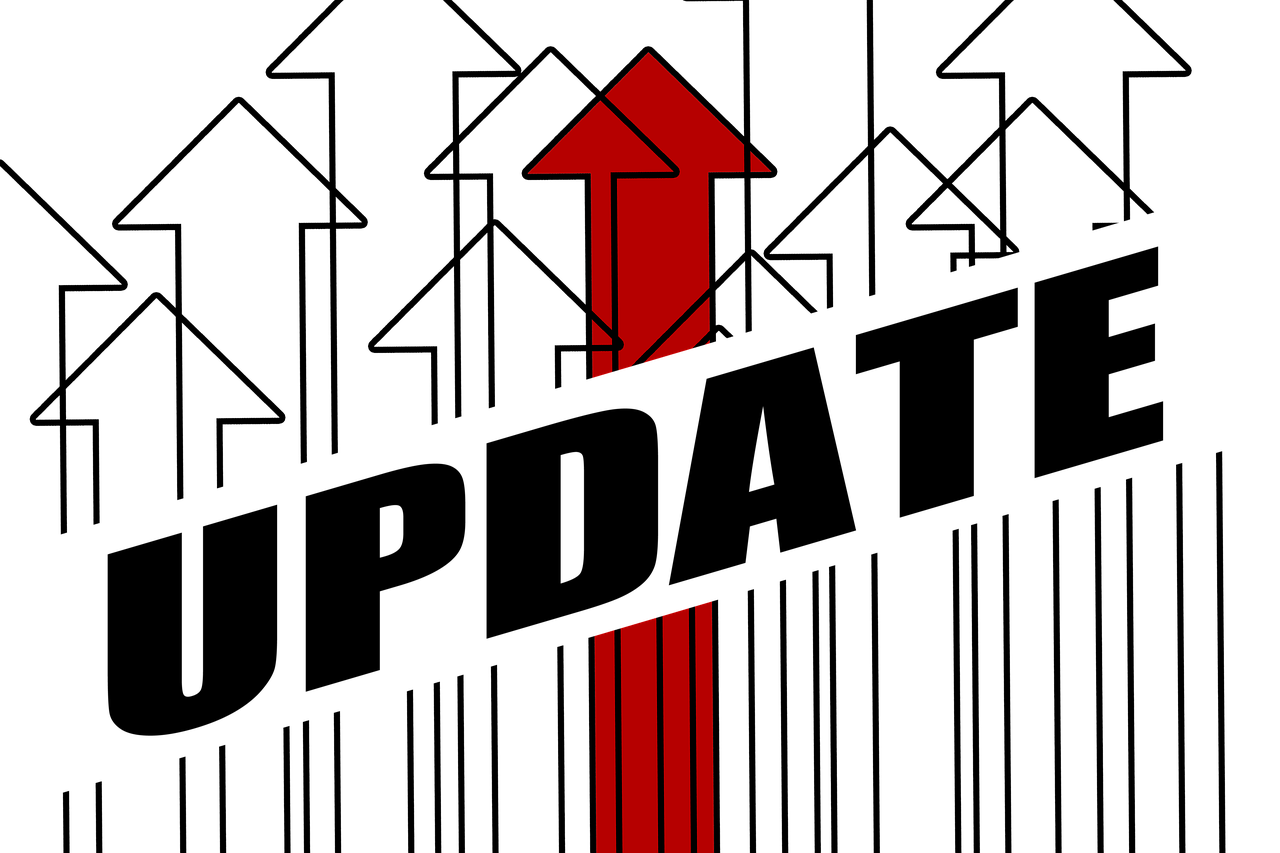
Precision agriculture, facilitated by drones, promotes environmentally responsible farming practices by reducing the use of chemicals and conserving resources.
Precision agriculture, empowered by the use of drones, stands at the forefront of modern farming, heralding a new era of environmental responsibility. This innovative approach goes beyond merely increasing efficiency; it is a holistic strategy that benefits both farmers and the planet.
Targeted Resource Management: Drones equipped with advanced sensors and imaging technology can provide real-time data on crop health, soil moisture, and nutrient levels. This granular information allows farmers to precisely target their interventions. Instead of blanket applications of chemicals, fertilizers, or irrigation, resources can be deployed only where and when they are needed. This not only reduces waste but also minimizes the environmental impact of agriculture.
Chemical Reduction: One of the most significant environmental benefits of precision agriculture with drones is the reduction in chemical usage. By accurately identifying areas that require pest control or fertilization, farmers can apply chemicals sparingly and strategically. This practice minimizes the release of pesticides and fertilizers into the environment, mitigating their adverse effects on water quality and non-target species.
Water Conservation: Drones equipped with thermal cameras and moisture sensors can identify areas with water stress or inefficient irrigation. By detecting leaks or optimizing irrigation schedules, precision agriculture minimizes water wastage. This is particularly crucial in regions facing water scarcity, where responsible water management is essential for the long-term sustainability of agriculture.
Erosion Prevention: Soil erosion poses a significant threat to soil health and water quality. Drones can aid in the identification of erosion-prone areas, enabling farmers to implement erosion control measures effectively. This proactive approach helps retain fertile topsoil, preventing sediment runoff into waterways, which can have detrimental ecological impacts.
Biodiversity Preservation: Precision agriculture’s judicious resource management can create habitats and corridors for wildlife within farming landscapes. By reducing chemical usage and minimizing disturbances, precision farming can foster biodiversity. The presence of native flora and fauna can provide valuable ecosystem services, such as natural pest control and pollination, which further reduce the reliance on chemicals.
Carbon Footprint Reduction: Through precise decision-making and optimized resource use, precision agriculture contributes to reducing the carbon footprint of farming. By reducing the need for fuel, fertilizer, and pesticide production and transportation, this approach diminishes greenhouse gas emissions associated with agriculture.
Data-Driven Sustainability: The data collected by drones in precision agriculture enable farmers to continuously assess and refine their practices. Long-term trends and patterns can be identified, facilitating the development of sustainable farming strategies tailored to local conditions and evolving environmental challenges.
In conclusion, precision agriculture empowered by drones embodies a paradigm shift towards environmentally responsible farming. By maximizing resource efficiency, reducing chemical usage, conserving water, and preserving biodiversity, this approach not only enhances the economic viability of farming but also fosters a sustainable coexistence between agriculture and the environment. As we face mounting environmental challenges, precision agriculture with drones emerges as a beacon of hope, demonstrating that technology and responsible practices can harmonize to feed the world while safeguarding our planet.
Looking for more insights? You’ll find them right here in our extended coverage: Exploring consumers’ environmental ethical preferences in the …

The reduction in resource use, labor, and chemical applications translates into cost savings for farmers.
The tangible benefits of resource-efficient agricultural practices extend far beyond environmental conservation. One of the most compelling advantages is the substantial cost savings that these practices offer to farmers.
Resource efficiency, achieved through techniques like precision agriculture, reduced tillage, and optimized irrigation, directly impacts a farm’s bottom line. By using resources such as water, energy, and fertilizers more judiciously, farmers can significantly reduce their operational costs. For instance, precision irrigation systems deliver water directly to the roots of plants, minimizing wastage and reducing water-related expenses.
Furthermore, labor efficiency plays a pivotal role in cost reduction. Automation and smart technology solutions, such as robotic harvesters and autonomous tractors, not only increase the efficiency of farm operations but also reduce the labor costs associated with traditional farming practices. These technologies allow for more precise and timely tasks, enhancing overall productivity while reducing the need for manual labor.
Another key aspect of resource-efficient farming is the judicious use of chemical inputs, such as pesticides and fertilizers. Integrated pest management (IPM) and soil testing practices help farmers optimize the application of these inputs. By using them only when and where needed, farmers can reduce both their expenses and their environmental footprint. Additionally, reduced chemical usage promotes healthier ecosystems, leading to fewer issues with pesticide resistance and pollution.
Overall, cost savings achieved through resource-efficient practices bolster the economic viability of farming operations. By decreasing expenses related to inputs, labor, and resource usage, farmers can increase their profitability while simultaneously contributing to a more sustainable and environmentally responsible food production system. This synergy between economic benefits and environmental stewardship is a cornerstone of modern agriculture, paving the way for a resilient and prosperous future in farming.
If you’d like to dive deeper into this subject, there’s more to discover on this page: Drones | AgTech
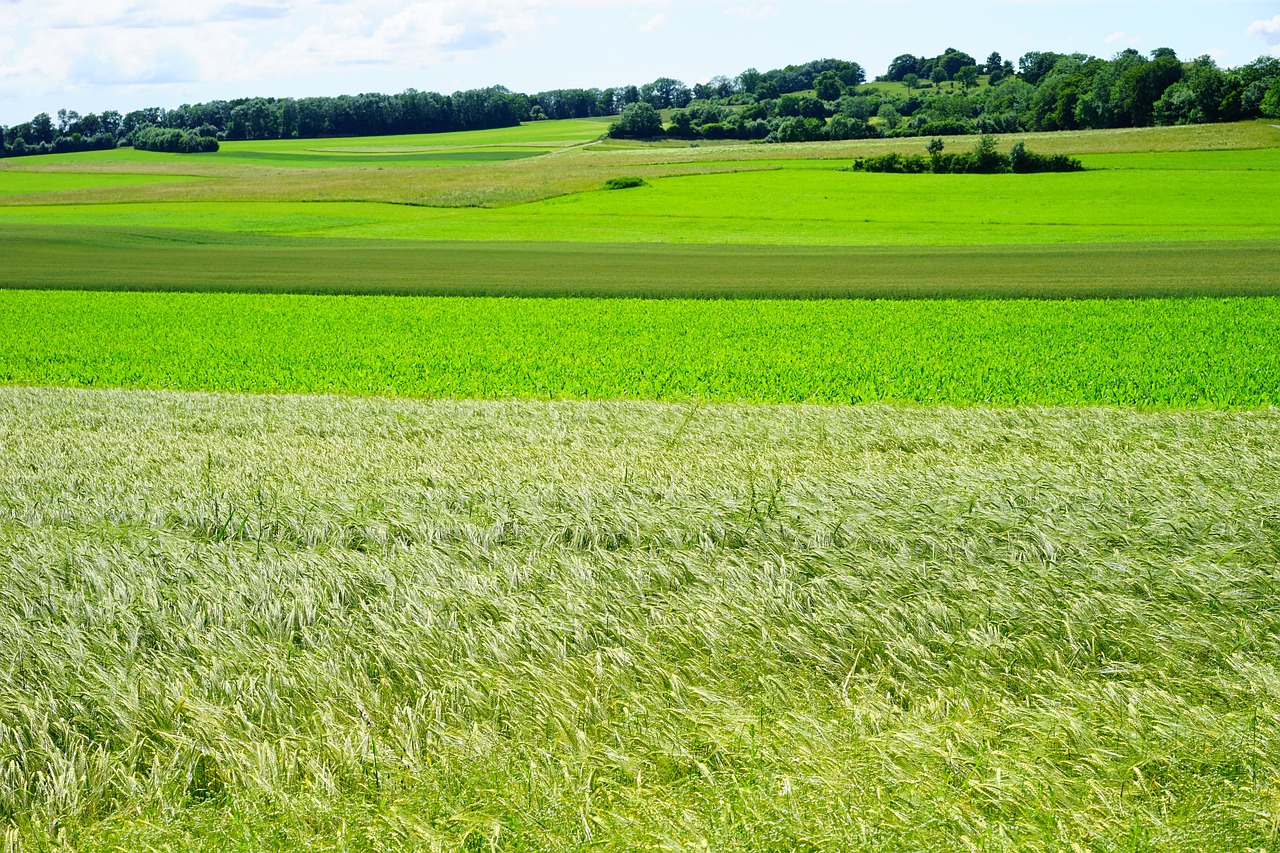
While the benefits of drones and UAVs in agriculture are evident, challenges remain, including regulatory hurdles, initial investment costs, and the need for specialized training. However, as technology continues to advance, these obstacles are gradually being overcome.
Indeed, the advantages of integrating drones and UAVs into agriculture are undeniable, yet it’s essential to acknowledge the persisting challenges that farmers and the industry face. Fortunately, the relentless march of technology and concerted efforts are gradually chipping away at these obstacles, paving the way for broader adoption and reaping even greater rewards in the agricultural sector.
Regulatory Hurdles: Regulatory frameworks for drone usage in agriculture are still evolving in many regions. Concerns about airspace safety, privacy, and data management have led to stringent regulations. However, governments and aviation authorities are increasingly recognizing the potential of drones in agriculture and are working to create clearer, more accommodating rules. Collaborative efforts between the agricultural and aviation sectors are helping strike a balance between safety and innovation.
Initial Investment Costs: The purchase of drones and the necessary equipment can pose a significant upfront investment for farmers, particularly those on smaller or less capitalized operations. However, the decreasing cost of drone technology and the emergence of more affordable, purpose-built agricultural drones are making these tools more accessible to a broader range of farmers. Furthermore, the long-term benefits, including improved yields and resource management, often outweigh the initial expenditure.
Specialized Training and Skills: Operating agricultural drones requires a certain level of technical expertise. Farmers need to understand how to plan and execute drone flights, interpret data collected, and make informed decisions based on that data. The need for specialized training can be a barrier for some farmers. However, as the technology matures, user-friendly software interfaces and simplified data analysis tools are becoming more prevalent, making it easier for farmers to harness the power of drones without extensive training.
Data Management and Integration: The wealth of data generated by drones can be overwhelming without proper data management systems. Integrating drone-generated data into existing farm management systems can be a challenge. However, the development of user-friendly data platforms and software solutions that seamlessly integrate drone data into farm management practices is simplifying this process.
Infrastructure and Connectivity: In some rural areas, limited connectivity can hinder the real-time transmission of data from drones. However, improvements in rural internet access and the development of onboard storage solutions in drones are mitigating this issue, allowing farmers to collect and store data until they can access a stable internet connection.
As technology continues its relentless progression, these challenges are steadily being addressed. The agricultural community, technology developers, and regulatory bodies are collaborating to create a more conducive environment for the integration of drones and UAVs into farming practices. With each passing day, the benefits of these technologies become more accessible to farmers of all scales, promising a more efficient, sustainable, and productive future for agriculture.
You can also read more about this here: Smart Farming: The Future of Agriculture

Conclusion
Drones and UAVs have transformed agriculture into a data-driven, precise science. With the ability to monitor crops, assess field conditions, and optimize resource use, these aerial devices are helping farmers increase productivity while minimizing environmental impact. As the agricultural landscape continues to evolve, drones and UAVs will play an increasingly crucial role in ensuring food security and sustainable farming practices. Their integration into modern agriculture is not just a trend but a transformation that is reshaping the way we cultivate the land and feed the world.
Indeed, the integration of drones and UAVs into agriculture represents a profound shift in the way we approach food production and environmental stewardship. This transformation extends well beyond the present, as it lays the foundation for a more sustainable and secure future for global agriculture.
Enhanced Productivity and Efficiency:
The adoption of drones and UAVs in agriculture is akin to having an army of diligent agronomists constantly surveying and managing crops. They operate tirelessly, gathering data, identifying issues, and providing insights to enhance productivity. This efficiency is particularly valuable as the global population continues to grow, placing ever-increasing demands on food production.
Environmental Stewardship and Sustainable Practices:
In an era where sustainability is a global priority, drones and UAVs are invaluable tools for farmers seeking to reduce their environmental footprint. By enabling precise resource management, they contribute to responsible land use, reduced chemical applications, and minimized water wastage. These practices are essential for safeguarding natural ecosystems, conserving biodiversity, and mitigating the impacts of agriculture on climate change.
Resilience in the Face of Climate Change:
Agriculture is on the front lines of climate change, facing challenges such as extreme weather events and shifting growing seasons. Drones provide a means to monitor and adapt to these changes rapidly. With real-time data on hand, farmers can adjust planting schedules, irrigation, and pest management strategies to mitigate the effects of a changing climate.
Global Food Security:
Drones and UAVs are instrumental in bolstering global food security. By helping farmers optimize yields and minimize losses, they contribute to a more robust and reliable food supply chain. Additionally, these technologies are valuable in remote and underserved regions, enabling precision farming practices that were previously out of reach.
Scientific Advancements:
The data collected by drones and UAVs not only benefits individual farmers but also contributes to agricultural research and innovation. Large-scale data sets can help scientists develop new crop varieties, pest-resistant strains, and cultivation methods that further enhance food production and sustainability.
Economic Viability:
Farmers who harness the power of drones and UAVs gain a competitive edge in an ever-evolving market. The ability to produce more with fewer resources is not only environmentally responsible but also economically viable. As these technologies become more accessible and affordable, their adoption becomes an essential strategy for maintaining profitability in the agricultural sector.
In conclusion, the transformation of agriculture through drones and UAVs is not a fleeting trend; it is a profound shift that aligns with the evolving needs of society, the environment, and global food security. These aerial devices are not just tools but partners in the journey toward a more sustainable and productive agricultural future. As their capabilities continue to expand, they will remain at the forefront of innovative farming practices, reshaping the landscape of food production for generations to come.
To expand your knowledge on this subject, make sure to read on at this location: Implementation of artificial intelligence in agriculture for optimisation …
More links
Explore this link for a more extensive examination of the topic: Agriculture Drone Market Size, Share | Global Report [2030]
